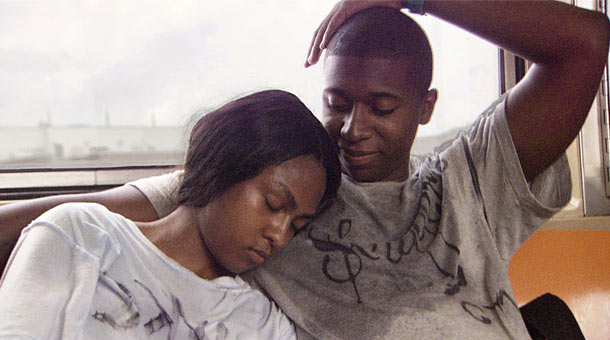
You find yourself strangely compelled to see what unfolds in Gimme The Loot, even when the subject matter would normally be of little interest.

You find yourself strangely compelled to see what unfolds in Gimme The Loot, even when the subject matter would normally be of little interest.
Adam Leon’s debut feature Gimme The Loot was an instant hit when it first premiered at the SXSW Film Festival and won the Grand Jury prize. The film made an impressive festival circuit run which included the prominent Cannes Film Festival, and would go on to be nominated for two Independent Spirit Awards. The story itself is exceptionally simple, but the execution in this low-budget indie film is what makes it so notable; like putting old-school funk music over-top of the modern day New York City hoodlums.
The film is a day in the life of Malcolm (Ty Hickson) and Sofia (Tashiana Washington), two young graffiti artists who live in an urban neighborhood of New Your City. When the film begins they can be seen on the top of a building, marking their territory with spray paint. The next day their work has been covered up by rival taggers. Constant one-upmanship is common among graffiti artists, so the two think of the biggest and riskiest scheme they can think of.
Because no one has successfully “bombed” (tagged) the apple at Shea stadium, refusing to call it by its actual corporate name Citi Field, it becomes the perfect target. In case you are not a hardcore Mets fan, the apple appears each time a Met player hits a home run. It is a taggers dream to bomb it because the high risk yields a high reward; tens of thousands of people in the crowd would see your work.
In order to pull off this near impossible feat, the two need to collect $500 dollars, so they can pay off a security guard that Malcolm happens to know. Because Malcolm is a drug dealer, he has connections to a wide range of people, though their trustworthiness is suspicious at best. Using his position as drug dealer, Malcolm decides to take loot from the people he is selling to, in an effort to come up with the $500. The two get resourceful and do whatever they can to make a quick buck.

Even though Malcolm and Sofia end up stealing from whomever they can, something interesting happens along the way, a softer side is shown. A good example of this is when they steal flowers from a sidewalk vendor, so he can give them to his mother for her birthday. This is also seen when the two hustlers decide to check on the very person they are robbing when that person’s life is thought to be in danger. So while they are a far cry from being Samaritans, they often have good intentions while doing these criminal activities.
The cinematography contained throughout Gimme The Loot is absolutely stunning to look at. Unless you are from the Bronx, there are times when it feels like you are watching a foreign film, even though it is a domestic one. That is because the film showcases unfamiliar locations and cultures that are not often shown in other films. The best display of the cinematography is when the camera closely follows a character on a jog, capturing the beauty of the urban landscape of the inner-city neighborhoods along the way.
Another area that Gimme The Loot excelled in was the dialog, though not perfect, it sounded very natural. At times it seemed as if Ty Hickson’s lines were improvised, which helped make conversations and encounters feel spontaneous. However, there are some parts in conversations that go flat while a character rants a bit, but the authenticity is never in question.
You find yourself strangely compelled to see what unfolds in Gimme The Loot, even when the subject matter would normally be of little interest. The film is no more than a slice-of-life tale of two urban graffiti artists, but is handled in a way that is hard to despise them, even if they are criminals. The tragedy is not the criminal acts they carry out, but rather how they always ended up in the same position they started in. Every time they catch a break, a misfortunate event takes place to reset what was gained. It was if they were on an endless escalator, never able to get ahead. A quote from the Red Queen in Lewis Carroll’s Through the Looking-Glass sums up their situation perfectly, “It takes all the running you can do, to keep in the same place.”